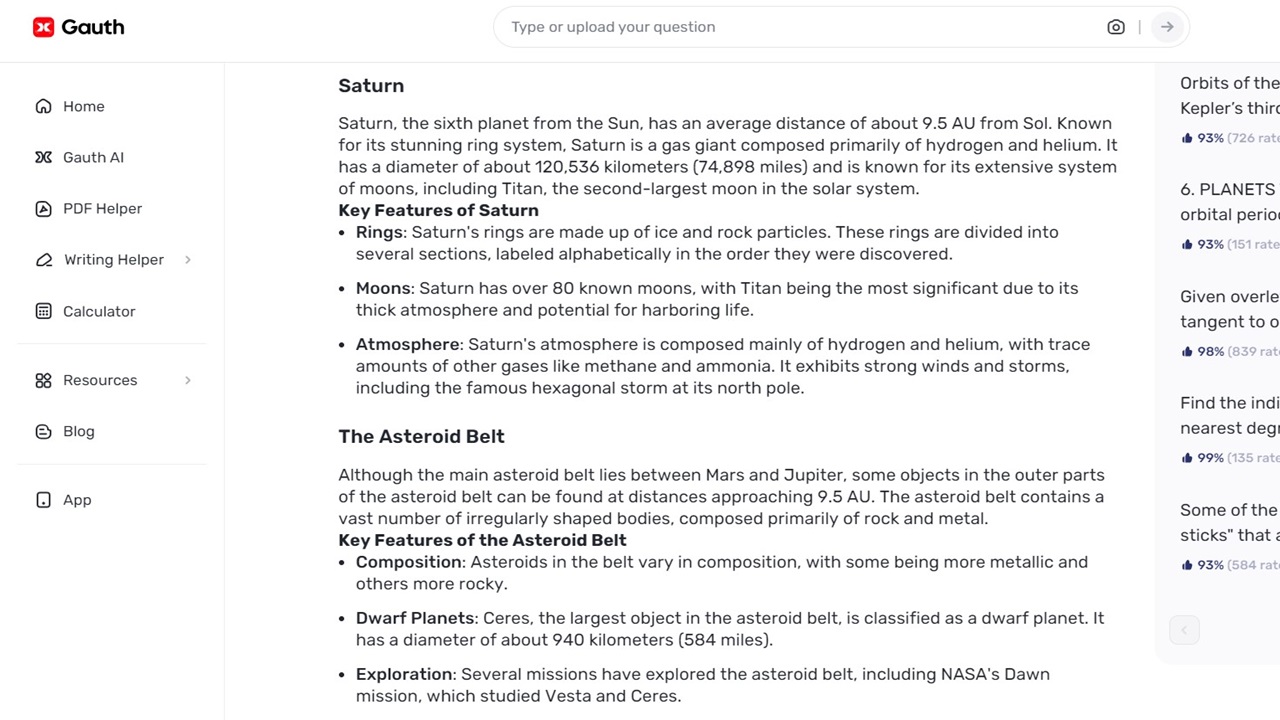The vastness of the universe can be best described as almost inconceivable, especially in terms of the separation between objects. Space is very big and as such distances in space are also very big. Astronomical Units (AU) is one of the units that astronomers use to measure these large distances. Nevertheless, for many students and enthusiasts, the understanding of the concept of astronomical units is rather a problem. This is where Gauth’s educational tools are useful in making the learning process as well as the understanding of astronomical units simple and entertaining.
Breaking Down the Concept of Astronomical Units
Astronomical Units are employed to measure the average distance between the Earth and the Sun which is 93 million miles or 150 million kilometers. One AU is an easy way of measuring distances within the solar system because the figures are not large. For instance, Jupiter is about 5. 2 astronomical units from the Sun, that is, 5. Two times the distance from the Sun as Earth is. Gauth’s educational tools excel at breaking down this concept for learners of all levels. By offering clear definitions, visual aids, and interactive elements, Gauth helps students move beyond abstract numbers such as 9.5 au from sol to a more concrete understanding of astronomical distances. The platform’s intuitive explanations allow users to grasp how AU serves as a foundational unit in astronomy.
Interactive Simulations Enhance Learning
One of the standout features of Gauth’s educational tools is the use of interactive simulations. Understanding astronomical units becomes much easier when students can visualize and manipulate these vast distances. Gauth provides interactive models of the solar system where users can adjust the position of planets and measure the distances in astronomical units.
These simulations help the learners to be able to understand how far the planets are from the sun as they can observe the changes as they happen. For example, students can be taught how the distance of Mars varies over time about the position of the Earth and thereby be able to understand how AU is applied in other contexts. This hands-on approach makes abstract concepts more tangible and memorable.
Tailored Explanations for Different Learning Levels
Gauth recognizes that learners come with different levels of prior knowledge and comprehension abilities. To accommodate this, the platform tailors its explanations of astronomical units to suit the needs of beginners, intermediate learners, and advanced students. For beginners, Gauth introduces astronomical units with simple analogies, comparing them to more familiar distances. Intermediate learners might explore the relationship between AU and light-years or parse through more detailed explanations involving planetary orbits. Advanced students can delve into the application of AU in calculating the distances of exoplanets and other celestial bodies. By providing content that is tailored to each learning level, Gauth ensures that every student can build a strong foundation in understanding astronomical units, regardless of their starting point.
Connecting Theory with Real-World Applications
It is not mere information that is accumulated for accumulation but information that is applied in astronomy, space exploration, and even in science fiction. Gauth also describes to students how AU is used in modern space exploration, for instance, to measure the distance to the outer planets or to track the motion of asteroids. For instance, students can be informed that the Voyager spacecraft had to use the AU to measure the distance between it and the Earth when it was leaving the interstellar medium. The examples from real life during the learning process make it more interesting and help to realize the application of astronomical units.

Conclusion
Gauth’s educational tools are transforming how students understand complex astronomical concepts like astronomical units. By breaking down the concept, providing interactive simulations, tailoring content to different learning levels, connecting theory with real-world applications, and reinforcing knowledge with quizzes, Gauth makes the learning process both accessible and enjoyable. With Gauth, students can confidently navigate the vast distances of space, one astronomical unit at a time.
